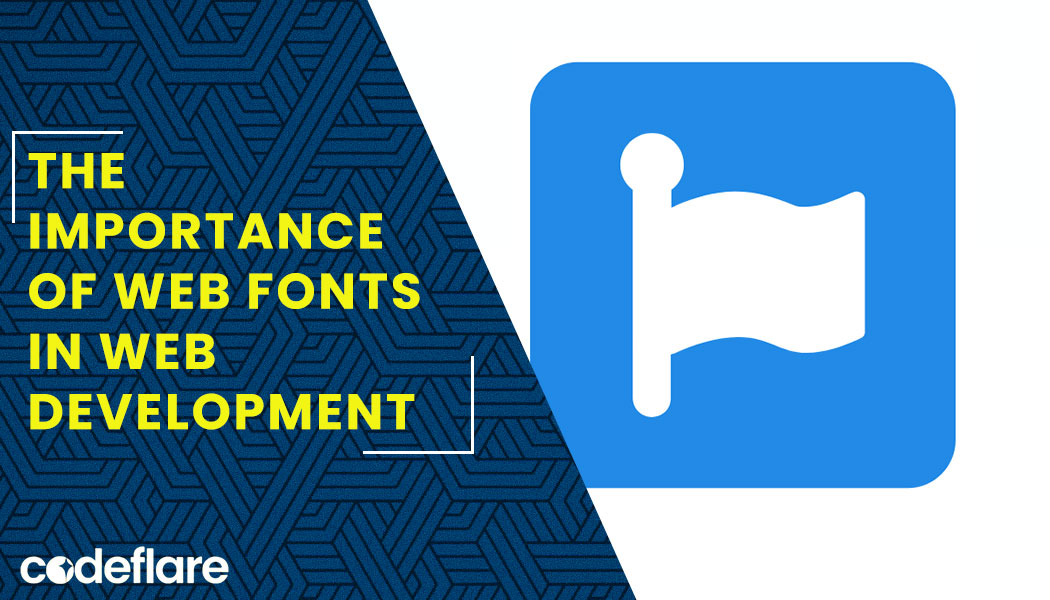
Web fonts have dramatically transformed the way designers and developers approach typography on the web. Moreover, tools like Font Awesome, Google Fonts, Adobe Fonts, and others offer a wide range of options that enhance the visual appeal, usability, and performance of websites. This article explores the importance of web fonts in web development, while also highlighting their impact with examples.
1. What are Web Fonts?
Web pages load web fonts hosted on servers using CSS. However, unlike system fonts installed on a user’s device, the browser downloads web fonts when loading a page. Consequently, this approach ensures consistent font display across all devices and operating systems.
Font Awesome
Font Awesome is a popular toolkit for adding scalable vector icons and social logos to your website. Moreover, these icons can be customized with CSS, just like regular fonts.
Benefits of Font Awesome
- Scalability: Being vector-based, Font Awesome icons scale perfectly on any screen size without losing quality.
- Customization: Icons can be easily customized with CSS to change their size, color, shadow, and any other CSS property.
- Performance: Using icon fonts reduces the number of HTTP requests since multiple icons are bundled into a single font file.
Example:
Here’s how you can include Font Awesome in your project and use an icon:
<!DOCTYPE html>
<html lang="en">
<head>
<meta charset="UTF-8">
<meta name="viewport" content="width=device-width, initial-scale=1.0">
<title>Font Awesome Example</title>
<link rel="stylesheet" href="https://cdnjs.cloudflare.com/ajax/libs/font-awesome/6.0.0-beta3/css/all.min.css">
<style>
.icon {
font-size: 24px;
color: #333;
}
</style>
</head>
<body>
<h1>Font Awesome Example</h1>
<i class="fas fa-home icon"></i> Home
</body>
</html>
Google Fonts
Google Fonts offers a library of free and open-source web fonts. It includes a vast collection of fonts that you can easily integrate into your website to improve typography and overall design.
Benefits of Google Fonts
- Variety: With hundreds of font families available, Google Fonts offers a diverse range of styles to fit any design need.
- Ease of Use: Integrating Google Fonts is straightforward and requires only a few lines of code.
- Performance: Google Fonts are optimized for performance and are served from fast, reliable servers.
Example:
Here’s how you can use Google Fonts in your project:
<!DOCTYPE html>
<html lang="en">
<head>
<meta charset="UTF-8">
<meta name="viewport" content="width=device-width, initial-scale=1.0">
<title>Google Fonts Example</title>
<link rel="stylesheet" href="https://fonts.googleapis.com/css2?family=Roboto:wght@400;700&display=swap">
<style>
body {
font-family: 'Roboto', sans-serif;
}
h1 {
font-weight: 700;
}
p {
font-weight: 400;
}
</style>
</head>
<body>
<h1>Google Fonts Example</h1>
<p>This is an example of using Google Fonts on a webpage. The font family used here is Roboto.</p>
</body>
</html>
Adobe Fonts
Adobe Fonts (formerly Typekit) provides a subscription-based library of high-quality fonts. It includes a vast selection of professional fonts that you can seamlessly integrate into your web projects.
Benefits of Adobe Fonts
- Quality and Variety: Adobe Fonts offers a wide range of high-quality fonts from renowned type foundries.
- Ease of Integration: Adobe Fonts can be easily integrated into your website with a simple script.
- Consistency: Using Adobe Fonts ensures that your typography is consistent across all platforms and devices.
Example:
Here’s how you can use Adobe Fonts in your project:
- Sign in to your Adobe Fonts account and choose the fonts you want to use.
- Copy the provided embed code and paste it into the
<head>section of your HTML document.
<!DOCTYPE html>
<html lang="en">
<head>
<meta charset="UTF-8">
<meta name="viewport" content="width=device-width, initial-scale=1.0">
<title>Adobe Fonts Example</title>
<link rel="stylesheet" href="https://use.typekit.net/xxxxxx.css"> <!-- Replace xxxxxx with your kit ID -->
<style>
body {
font-family: 'futura-pt', sans-serif;
}
h1 {
font-family: 'minion-pro', serif;
}
</style>
</head>
<body>
<h1>Adobe Fonts Example</h1>
<p>This is an example of using Adobe Fonts on a webpage.</p>
</body>
</html>
Custom Web Fonts with @font-face
You can also use custom web fonts by hosting them yourself and using the @font-face rule in CSS.
Benefits of Custom Web Fonts
- Customization: Full control over the fonts you use.
- Brand Consistency: Ensures that your brand’s unique font is used across all platforms.
Example:
Here’s how you can use custom web fonts in your project:
- Include the font files (e.g., .woff, .woff2, .ttf) in your project directory.
- Use the
@font-facerule to define the font in your CSS.
<!DOCTYPE html>
<html lang="en">
<head>
<meta charset="UTF-8">
<meta name="viewport" content="width=device-width, initial-scale=1.0">
<title>Custom Web Fonts Example</title>
<style>
@font-face {
font-family: 'CustomFont';
src: url('fonts/CustomFont.woff2') format('woff2'),
url('fonts/CustomFont.woff') format('woff');
}
body {
font-family: 'CustomFont', sans-serif;
}
</style>
</head>
<body>
<h1>Custom Web Fonts Example</h1>
<p>This is an example of using a custom web font.</p>
</body>
</html>
Importance of Web Fonts in Web Development
1. Consistent Typography
Web fonts ensure consistent typography across all devices and browsers. This consistency is crucial for maintaining a professional and cohesive appearance, especially for branding purposes.
2. Enhanced Visual Appeal
With the variety of fonts and icons available through services like Google Fonts, Font Awesome, Adobe Fonts, and custom fonts, designers can significantly enhance the visual appeal of a website. Custom typography can make a site stand out and create a unique user experience.
3. Improved Readability and User Experience
Choosing the right fonts can significantly improve readability, which is essential for keeping users engaged with the content. Additionally, well-selected fonts enhance the user experience by making the text easier to read and navigate.
4. Performance Considerations
Adding custom fonts may slightly increase page load times due to additional HTTP requests, but the benefits often outweigh the drawbacks. Google Fonts and Adobe Fonts optimize for performance, and techniques like font subsetting and async loading mitigate potential performance issues.
5. Accessibility
Web fonts can enhance accessibility by providing clear, legible text that is easy for all users to read. Proper use of font weights and styles can ensure that text remains accessible to users with visual impairments.
Conclusion
Web fonts, including tools like Font Awesome, Google Fonts, Adobe Fonts, and custom solutions, are invaluable assets in web development. Furthermore, they offer a range of benefits, from ensuring consistent typography and enhancing visual appeal to improving readability and user experience. By thoughtfully integrating web fonts into their projects, developers and designers can create more engaging, accessible, and visually appealing websites that stand out in today’s competitive digital landscape.
The Best Frameworks for Web Development in 2024






